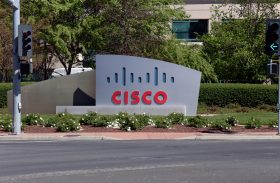The Great 5G Gamble

BARCELONA -- Mobile World Congress 2018 -- Some high-stakes punters go to Monaco or Las Vegas. Others come here to the Mobile World Congress.
With global service providers as well as their equipment and software providers investing hundreds of billions of dollars in the hopes that the gigabit speeds of forthcoming 5G wireless services will deliver a big payoff, the amount of risk in the communications markets has reached new scale. Here in Mobile World Congress, the search for business and consumer use cases to deliver the 5G payoff continues.
The global service providers have already raised billions in debt to start accumulating 5G spectrum as well as the funds for infrastructure investment, even before many governments worldwide have conducted 5G spectrum auctions. In addition, technology rollouts are just beginning and likely to continue for years, expected to peak in the 2020-2021 timeframe. Estimates of 5G investment run to the hundreds of billions of dollars, with market-research firm IHS putting the total spent by service providers and gearmakers at $200 billion a year on 5G -- though in reality nobody knows how much 5G will cost.
In the meantime, the 5G hype is spiralling out of control, framed as a panacea from everything ranging from car maintenance to e-health. Last year, the hype accelerated, as the first proposed 5G specs cast a wide net for 5G to enable high-bandwidth applications such as virtual reality (VR) and connected cars.
This year, it's more of the same -- though the 5G position has evolved a bit. It's now clear that the most aggressive rollouts will come in Asia in North American first, while Europe looks to be tapping the brakes a bit -- even though Deutsche Telekom has pledged to spend $15 billion in capital spending (capex) in 2018, much of it focused on 5G -- an astounding 20% of its revenue.
Service providers have also adjusted their target markets for 5G. North American carriers are emphasizing fixed access for 5G, where it could be used to replace fiber and business connectivity for high-bandwidth WAN connections. That makes sense, with the potential to expand the footprint of bandwidth at a lower cost structure than fiber, as well as open up the market for more lucrative connectivity for enterprise services.
Other uses cases, such as using 5G to connect the Internet of Things (IoT) and connected car, are wide ranging. One of 5G's attractions is flexibility in connectivity with the capability to virtually divide the capacity -- known in the industry as "network slicing" -- for different applications. As 5G evolves, it is also becoming more complex and diverse, with a range of protocols and speeds to target a variety of services applications -- such as using the NB-IoT or Cat-M specification of 5G to connect devices and vehicles.
Not only will the shift to 5G have the potential the service-provider market, but it's also a big shift for hardware and software providers positioning for change -- and hoping to collect portions of the sizable budget.
Angela Whiteford, vice president of Affirmed Networks, which makes 5G network software known as a virtualized evolved packet core (EPC), says service providers are ramping up interest in 5G to deliver services in places where it makes sense, such as connected car.
"In connected car, they are starting to make money. We have customers [such as Vodafone] providing that service. Going forward, with the slicing capability you can offer automobile manufacturers such as Peugeot and Audi their own slices and customize that slice.The billions of devices -- where are those going to come from? I think that's yet to be seen."
The business model for a connected car does makes sense, if you envision the connected vehicle as a roving datacenter with potential for high Average Revenue Per Unit (ARPU) driven by services such as e-maintenance, digital entertainment, and other subscriptions.
But other services are murkier. The Ericsson booth demonstrated use cases such as using sensors to provide emergency alerts for landslides, or by offering smart water metering services, a ubiquitous use case. But when I asked an Ericsson representative for the data on the economics of the service, it wasn't specified. A connected water meter may only cost $50 or so, but how much can you charge for a monthly water metering service?
The economics are, in fact, complex. One of the elements of 5G that makes return on investment (ROI) difficult to calculate is that the range of spectrum to be used has yet to be clearly defined. Two of the larger North American carriers, AT&T and Verizon, have been emphasizing the millimeter-wave spectrum, which can deliver high bandwidth rates over relatively short distances, which means low density of users per base station and more expense. Lower and mid-band 5G networks would have costs comparable to 4G LTE networks. Higher-band spectrum requires high base station density, resulting in higher costs.
So will 5G pay off? The matrix of possibilities in 5G make this answer unknowable at this point. It will be dependent on specific use cases. The industry, of course, remains optimistic. Nokia believes that using 5G to deliver higher bandwidth to the home will have a four-year return on investment payoff, according research released last year.
One thing is for sure -- the scale of 5G raises the risk profile of service providers and their equipment providers, which are under mounting margin pressures as their debt levels and investment costs escalate -- highly leveraged to the concept. Place your bets. 5G may have become the baccarat of the communications industry. Investors could be in for a wild ride.












